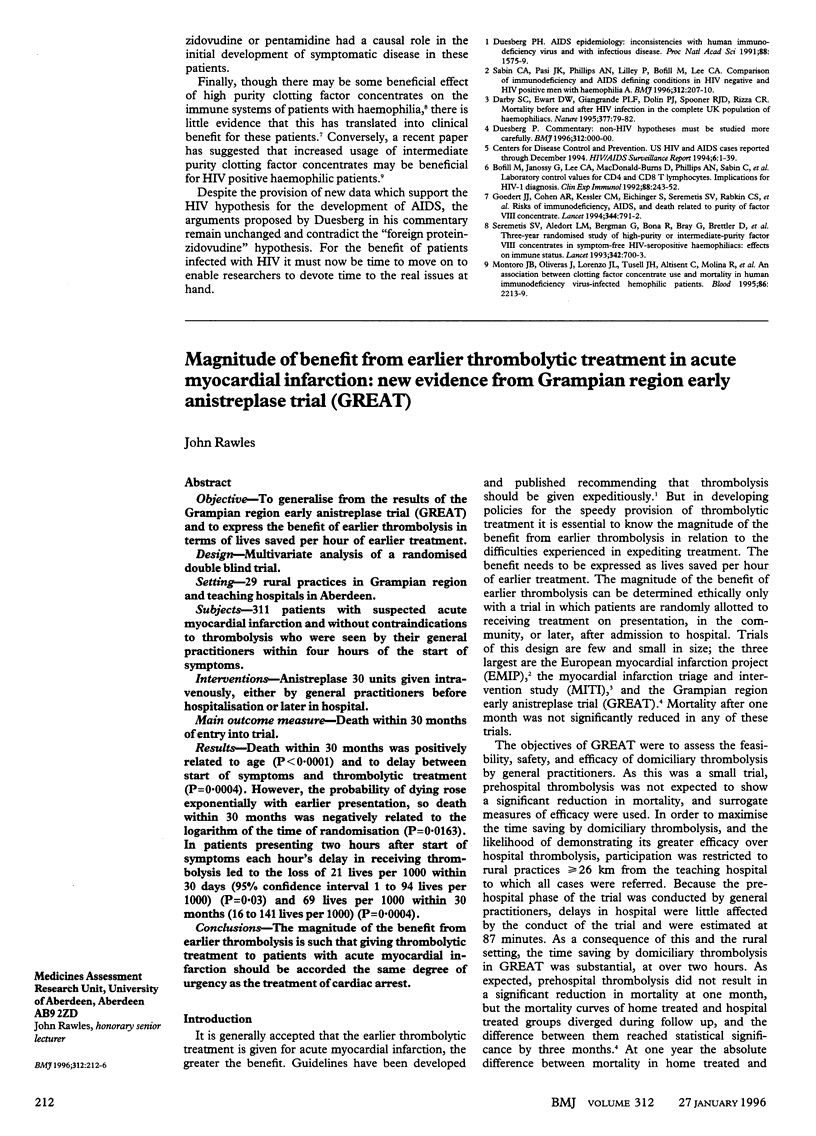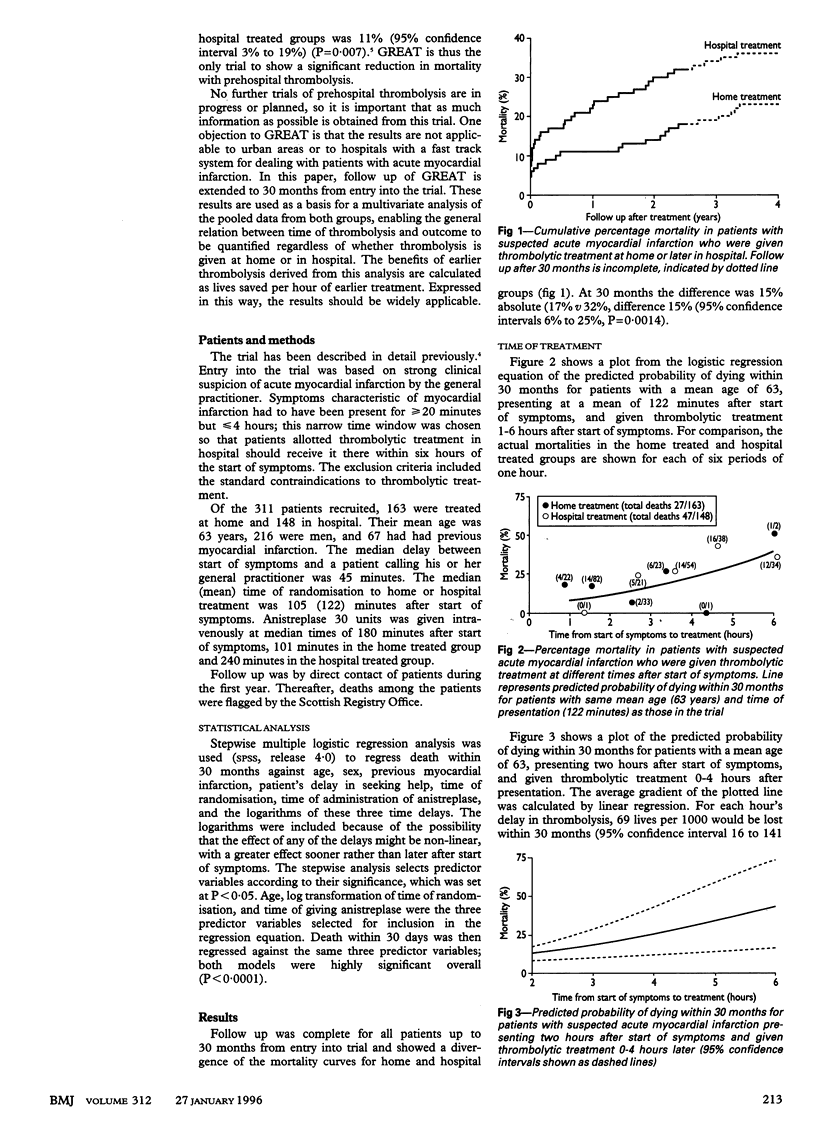Abstract
OBJECTIVE--To generalise from the results of the Grampian region early anistreplase trial (GREAT) and to express the benefit of earlier thrombolysis in terms of lives saved per hour of earlier treatment. DESIGN--Multivariate analysis of a randomised double blind trial. SETTING--29 rural practices in Grampian region and teaching hospitals in Aberdeen. SUBJECTS--311 patients with suspected acute myocardial infarction and without contraindications to thrombolysis who were seen by their general practitioners within four hours of the start of symptoms. INTERVENTIONS--Anisterplase 30 units given intravenously, either by general practitioners before hospitalisation or later in hospital. MAIN OUTCOME MEASURE--Death within 30 months of entry into trial. RESULTS--Death within 30 months was positively related to age (P < 0.0001) and to delay between start of symptoms and thrombolytic treatment (P = 0.0004). However, the probability of dying rose exponentially with earlier presentation, so death within 30 months was negatively related to the logarithm of the time of randomisation (P = 0.0163). In patients presenting two hours after start of symptoms each hour's delay in receiving thrombolysis led to the loss of 21 lives per 1000 within 30 days (95% confidence interval 1 to 94 lives per 1000) (P = 0.03) and 69 lives per 1000 within 30 months (16 to 141 lives per 1000) (P = 0.0004). CONCLUSIONS--The magnitude of the benefit from earlier thrombolysis is such that giving thrombolytic treatment to patients with acute myocardial infarction should be accorded the same degree of urgency as the treatment of cardiac arrest.
Full text
PDF



Selected References
These references are in PubMed. This may not be the complete list of references from this article.
- Hofgren K., Bondestam E., Johansson F. G., Jern S., Herlitz J., Holmberg S. Initial pain course and delay to hospital admission in relation to myocardial infarct size. Heart Lung. 1988 May;17(3):274–280. [PubMed] [Google Scholar]
- Maynard C., Althouse R., Olsufka M., Ritchie J. L., Davis K. B., Kennedy J. W. Early versus late hospital arrival for acute myocardial infarction in the western Washington thrombolytic therapy trials. Am J Cardiol. 1989 Jun 1;63(18):1296–1300. doi: 10.1016/0002-9149(89)91038-2. [DOI] [PubMed] [Google Scholar]
- Rawles J. M., Haites N. E. Patient and general practitioner delays in acute myocardial infarction. Br Med J (Clin Res Ed) 1988 Mar 26;296(6626):882–884. doi: 10.1136/bmj.296.6626.882. [DOI] [PMC free article] [PubMed] [Google Scholar]
- Rawles J. M., Metcalfe M. J., Shirreffs C., Jennings K., Kenmure A. C. Association of patient delay with symptoms, cardiac enzymes, and outcome in acute myocardial infarction. Eur Heart J. 1990 Jul;11(7):643–648. doi: 10.1093/oxfordjournals.eurheartj.a059770. [DOI] [PubMed] [Google Scholar]
- Rawles J. Treatment of myocardial infarction and angina. Review underestimated the benefit of early thrombolysis. BMJ. 1995 Feb 18;310(6977):465–466. doi: 10.1136/bmj.310.6977.465a. [DOI] [PMC free article] [PubMed] [Google Scholar]
- Trent R., Adams J., Jennings K., Rawles J. Impact of resuscitation and thrombolysis on mortality rate from acute myocardial infarction. Int J Cardiol. 1995 Mar 24;49(1):33–37. doi: 10.1016/0167-5273(95)02271-w. [DOI] [PubMed] [Google Scholar]
- Weston C. F., Penny W. J., Julian D. G. Guidelines for the early management of patients with myocardial infarction. British Heart Foundation Working Group. BMJ. 1994 Mar 19;308(6931):767–771. doi: 10.1136/bmj.308.6931.767. [DOI] [PMC free article] [PubMed] [Google Scholar]


